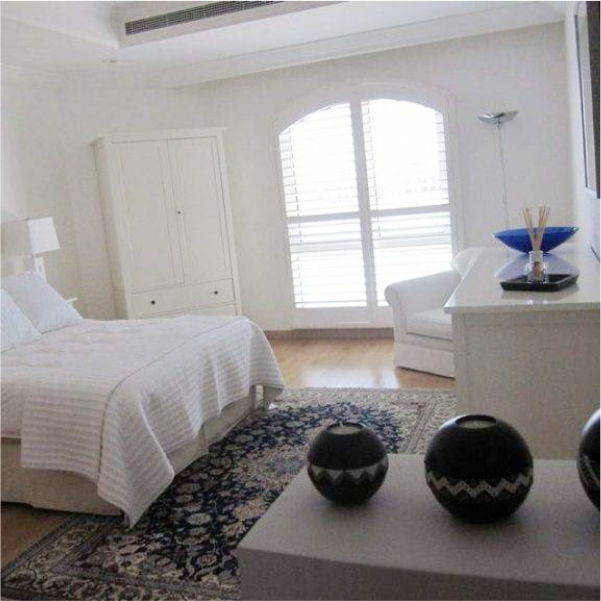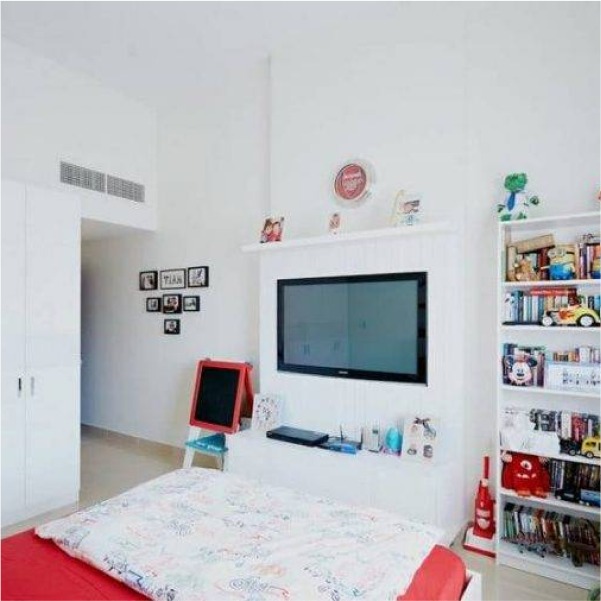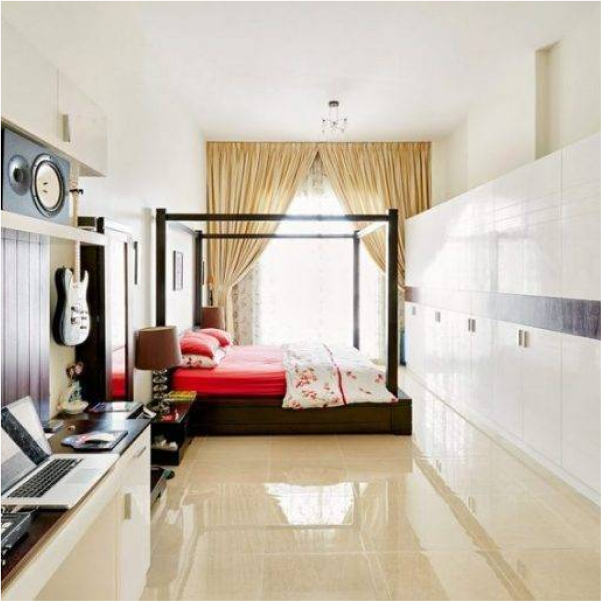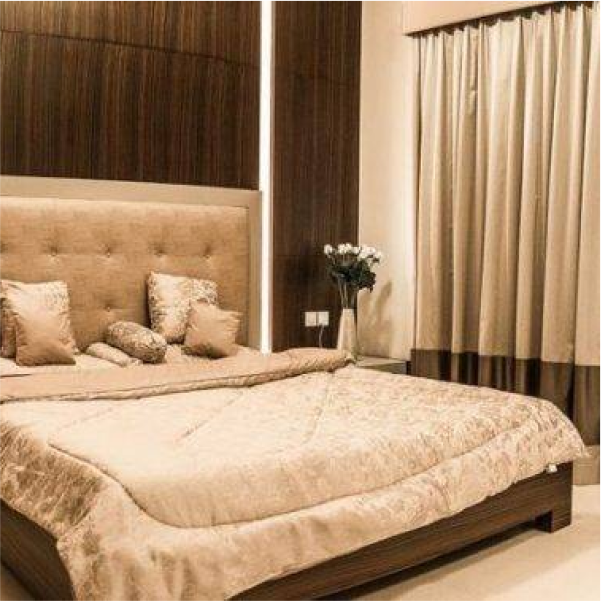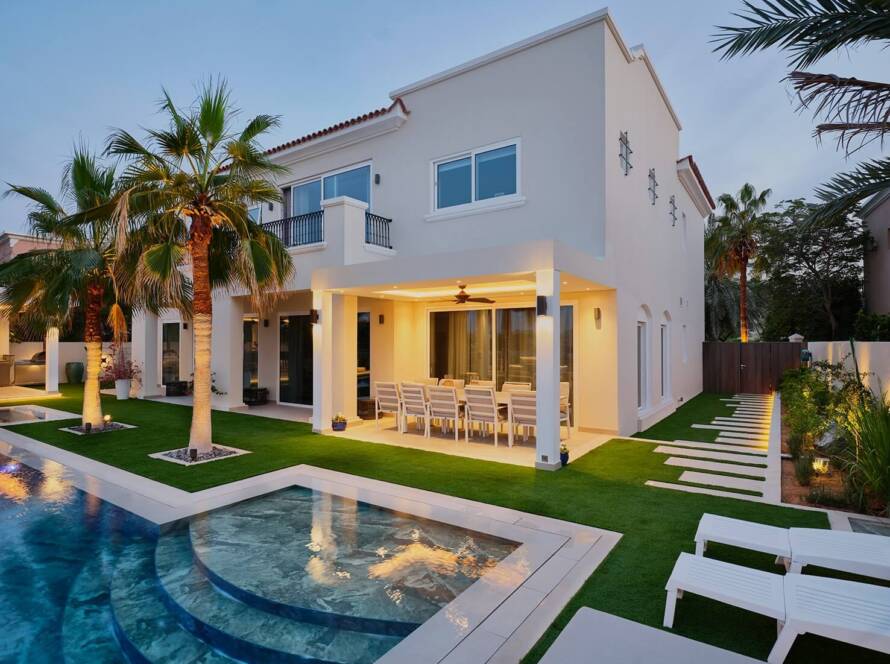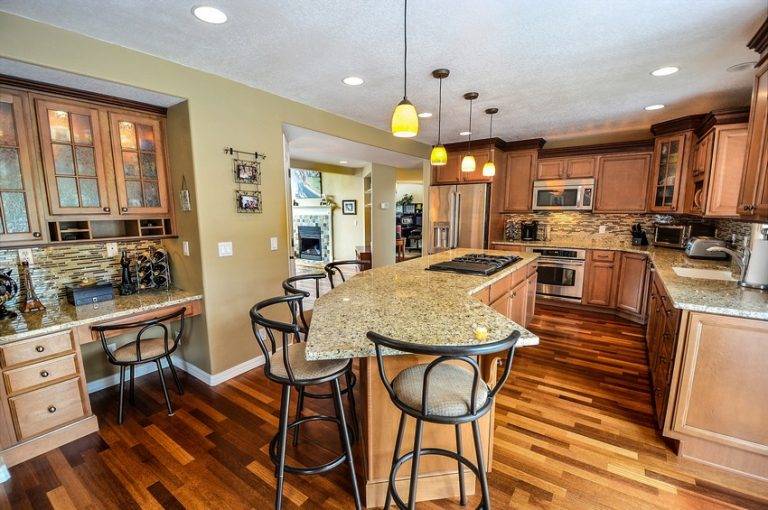On average, we spend a third of our lives in our bedrooms. Therefore, bedrooms need to be designed with careful consideration, irrespective of their size.
When you’re working with a smaller square footage, achieving your dream bedroom can seem almost impossible. However, you can use colors, textures and furniture creatively, in small bedroom interior design, to achieve the look you want while ensuring the room also serves its function.
Most of us live in cities where space is a premium commodity. Hence, many of us are not fortunate enough to enjoy the luxury of large living spaces. Read on to discover how we can make the space we have work for us.
Define Your Requirements
With smaller spaces, you need to pin down your requirements before even thinking of design. What do you hope to get out of your bedroom?
Is the bedroom for a married couple or a bachelor? If you are married, are you expecting a baby or planning for one in the near future? Would you like to have your baby’s crib in your bedroom?
Even if you do not have a child at the moment, but are planning one soon, it is important to design your bedroom with some flexibility so that a crib can easily be incorporated into your small bedroom interior design when the time comes.
Hence, your requirements will define the design of your bedroom.
Design No-Brainers For Small Bedroom Interior Design
We’ve all got our likes and dislikes and this is what makes each person unique. These preferences transfer to the spaces we live and work in. Although, each bedroom is unique in its design aesthetic, there are some common principles that can be applied to small bedroom interior design. These are our recommendations for the creative use of space in bedrooms with limited space.
Factor In Circulation
When designing a small bedroom space, we always think of furniture first. Once we’ve decided on this, we then think about the flow of circulation. In fact, it is best to approach this the other way around.
In a small bedroom, the optimum size of the bed recommended is 150cm x 190cm. This will occupy less space, still leaving room for easy movement around the bed. You can also opt for a slightly larger bed of 150cm x 200cm. This is also acceptable as long as you have at least 60cm on either side of the bed.
Whether you have a freestanding wardrobe or a built-in one, ensure that there is a minimum of 1.2m between the bed and the wardrobe. Not only do you need enough room for the door swing, but you also want to be able to walk comfortably when you get into or out of bed.
Think about these clearances so that you can buy your furniture appropriately. This way you can make sure that the room functions well. If you buy furniture without considering the flow of movement, you might end up with very tight spaces that are uncomfortable to navigate.
Pay Attention To Colors
As a general rule of thumb, darker colors make a room visually smaller, while lighter ones achieve the opposite effect.
Your small bedroom interior design should ideally use a light, neutral color palette. Opt for white, off-white or similar light colors for walls, ceilings and flooring. The lighter colors reflect light making the room feel larger.
Continue the wall colors up to the ceiling to achieve a more cohesive effect. This makes the room feel less cramped and more open.
If you’re the kind of person who enjoys color in your living spaces, accessorize with pops of color. Bold patterned bed pillows or a quilt can add a pleasing punch to a small bedroom. Moreover, you can change colors frequently if you like variety, by simply changing out your bed linen.
If your bedroom is bathed in natural light, you can opt for a darker accent color for one or more of the walls.
Plenty of natural light is the key to making a small room feel more spacious, even with darker colors. If you do choose to go the dark route, opt for chic colors such as olive green or charcoal grey that are closer to nature.
If you don’t have a large window, use several light sources to give the illusion of space. Use ceiling lamps, wall sconces and table lamps to create soft lighting, which makes the space look warm and welcoming.
Create The Illusion of Space
There are many tricks to making a small room appear larger. As we have mentioned before, light colors can make a room appear more spacious and airy. Similarly, drawing the viewer’s eyes upwards can give the illusion of height.
One way to do this is to drape curtains from ceiling to floor, irrespective of the window height. This visually elongates the room, giving the illusion of added height.
Use your ceiling to suspend things from it. Hanging planters, floating shelves and pendant lights all draw the eye upwards to the ceiling, elongating the space visually.
You can also add a decorative element to the ceiling itself, treating it like a fifth wall. A ceiling painted with a light pattern or color that differs from the wall color draws the eye upwards.
Paint the trim the same color as the wall to enhance this illusion of height. Be careful with color choices for your ceiling as this can sometimes have the opposite effect, making the room look more intimate. Steer clear of dark colored ceilings.
Accessories can also create the illusion of space. Read more below to see how to select accessories to elevate your small bedroom interior design.
Plants
Plants speak a different language and always make any environment come alive. Green is a soothing color and immediately invokes calm and serenity. By using plants in your bedroom, you can invite nature in, making the room feel cheery and bright.
Use tall plants to visually elongate the room. Experiment with artificial plants if your bedroom has low levels of natural light. Artificial plants today look very natural. You can find a good selection of artificial plants here.
Plants can be used creatively in a small bedroom interior design. A plant arrangement with small plants mounted on a wall could be paired with wallpaper or paintings to create a focal wall in a small bedroom.
Use Surfaces Creatively
Since floor space is limited, use walls and ceilings creatively. Don’t be afraid to hang things up.
Floating wall shelves, foldable work tables and wall niches take up very little space, but provide invaluable storage and work spaces. Wall art can also brighten up a room and give it a stylish touch.
Many people like to add decor to their bed back walls. Style up your bed back wall with textured fabric or wallpaper to add textural variety to your room.
Horizontal wood siding on a bed back wall can make the room look wider than it is. Think about wall art or paintings, but keep it simple. Adding too many patterns and textures in a small bedroom interior design can make you feel claustrophobic.
It is as important to think about the wall facing your bed as this is what you see when lying in bed or waking up. Therefore, it needs to be pleasing and soothing.
Beautiful artwork, soothing wallpaper or earthy wall panelling are all good options. Three dimensional wallpapers are all the rage and can liven up a small bedroom interior design.
Alternatively, a sleek console or a simple seating area with plants can also make a front wall come alive.
Don’t overlook the ceiling. Ceilings make a small room come alive. Enhance your ceiling with lighting – you can have a bulkhead of spot lighting or a dropped ceiling with a bulkhead and lights. Leave 2.8m of space above the bed. This ensures that the ceiling is not very imposing.
Lighting will define how your room feels at night. Have flexible lighting options to dim lights for mood lighting for a calm and peaceful vibe.
Tips and Tricks For Small Bedroom Interior Design
Now that you know the basic design principles for small bedroom interior design, how can you use these when accessorizing your bedroom?
Furniture
As you have limited space to work with, you need to choose your furniture wisely. Opt for furniture that has multiple uses. Multi-functional furniture is space saving as it can do the job of two instead of one.
So, if you have a window seat, add storage space under the window seat. A bench at the foot of your bed can serve as seating and can also add useful storage to the room. Storage drawers under your bed can provide hidden storage for items that are used infrequently.
Get creative with your furniture. If you can’t find what you’re looking for, our joinery department can custom design furniture to match your exact requirements.
Fabrics
Fabrics play an important part in furnishing a small bedroom. They can add texture and variety to the decor.
Match sheer curtains or light-colored ones with your wall color to make a room look more expansive. You can install blackout roller blinds in the background, which can be pulled down at night. During the daytime, enjoy the view and the sunlight framed through the window.
To make the room look even larger, opt for neutral colored fabrics for upholstery on chairs and seating, to match your wall colors. You could always accessorize with patterned cushions to add a pop of color.
Similarly, bed linen can be white or off-white with colored pillow covers and quilts to add variety.
Using the correct fabrics is the easiest and most flexible way to visually expand a small bedroom space.
Accessories
Accessories can help emphasize the scale of a room. Contrary to what you may think, large accessories can actually visually enlarge a small bedroom.
Opt for one large statement piece rather than several smaller ones which tend to make a room look more cluttered. Choose a large painting to grace a wall rather than several smaller ones.
Mirrors are a great way to create the illusion of space as they reflect light. Again, choose one large mirror to decorate a wall.
A long mirror will add the illusion of height whereas a large, round or wide mirror will tend to make the room look wider. Place mirrors closer to light fixtures to maximize their efficiency. This helps to scatter focussed light, creating soft, diffused lighting rather than bright spots within the room.
A large area rug can also make a room look bigger while adding a pop of color to the space. Smaller rugs make the room look choppy. When selecting your rug, make sure that the rug is large enough for the bed to fit entirely on it.
However, remember to let the room breathe. Not every spare surface in your room needs special treatment or an accent piece. It is okay to leave some walls bare as this will make the space look more open.
Eliminate Clutter
Whether big or small, nothing quite shrinks a room as clutter. Plan adequate storage so that clutter can be hidden away. Or, you can plan space to accommodate visible clutter.
Make room for a settee at the foot of your bed. Not only is it good for conversation, but can also be used as a parking space for cushions or clothes that get thrown around when you return from work. It becomes a planned dumping space that has already been thought of in the design. A bench at the foot of the bed can also have cubbies to store books or other items neatly.
To make the room look neat and tidy, have plenty of storage in the bedroom. Think vertical for storage. Get creative. Hang storage from the ceiling or use wall space for display style storage.
Pull out drawers under the bed are another convenient storage option that can be hidden away when not in use. Use these for extra bed linen or to store away clothes and items that you are currently not using.
Lighting
Everything we see is because of reflected light. Hence, lighting can be used to enhance the look of a room, making it seem bigger than it actually is.
Spread light evenly rather than relying on one large overhead fixture. Use wall sconces, table lamps and ceiling fixtures that offer a variety of light sources.
Place light fixtures at the corners of the room. This allows the light to be reflected by two adjacent corner walls, drawing your eye across the room.
Use wall lamps. These free up floor space and also reflect more light towards the interior of the room rather than the ceiling and floor.
Incorporate dimmers into your lighting plan. This allows you the flexibility of adjusting the lighting at different times of the day to elevate your mood or calm you down when it’s time for bed.
Why Choose Milestone For Your Small Bedroom Interior Design
At Milestone, we have designed a number of homes with bedrooms of varied sizes. I enjoy the challenge of working with small spaces. As the saying goes ‘Necessity is the mother of invention’. So too, I believe that small spaces challenge us to come up with innovative ideas in order to maximize their potential.
Keep the layout simple, the room as open as possible using the tips we have provided above and enjoy the bliss of owning a small bedroom. Alternatively, you can contact our design department at Milestone to help you with your small bedroom interior design.


